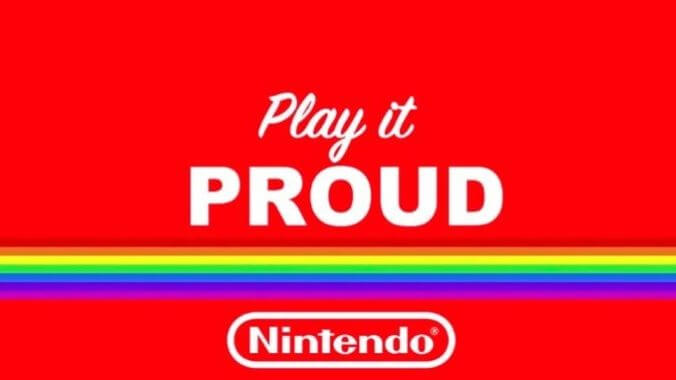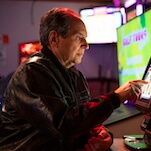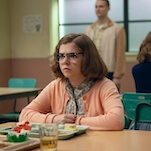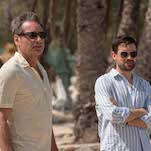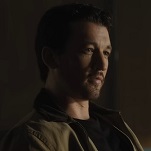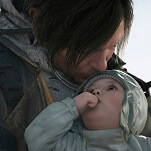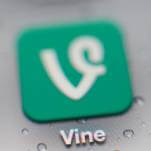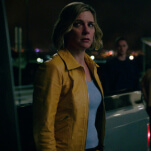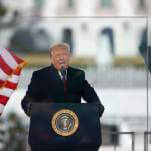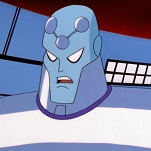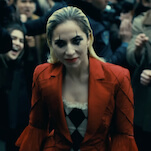In terms of games developed in-house at Nintendo’s internal studios, now known as Nintendo EPD, Birdo is pretty much where the story ends as far as *explicit* queer representation goes. While there is much to be said about the often non-traditional ways Nintendo portrays gender in games like The Legend of Zelda, I’d argue that’s a discussion of its own. Queerness, as we understand it, is not really something EPD-developed games like to explore in-depth, and while this can be a good thing, for instance in things like the casual acceptance of some gender non-conformity in The Legend of Zelda: Breath of the Wild, it can also lead to some very disappointing erasure. As recently as 2014, Nintendo’s life sim Tomodachi Life faced some fairly common criticism for disappointingly not allowing gay relationships between its Miis, something which by this point was already pretty much industry standard for the life sim genre. For a more robust history, we have to look to Nintendo’s external first party developers, especially Intelligent Systems and, more recently, Monolith Software.
The Other Guys
To start off, I don’t want to mischaracterize this issue as all bad — while a lot of this discussion is going to be very critical, there have been some genuine good-faith attempts at queer representation as far back as the ‘90s. In a 2008 interview, Mother series creator Shigesato Itoi talked about one such good-faith attempt he put into Mother 2, known in the U.S. as Earthbound.
“Well, for example, there’s a gay person in MOTHER 2,” Itoi said. “A really passionate friend who lives in an England-like place. I designed him to be a gay child. In a normal, real-life society, there are gay children, and I have many gay friends as well. So I thought it would be nice to add one in the game, too.”
This is a small but meaningful gesture which numerous gay fans of the series have expressed a fondness for.
Frustratingly, though, even some of these strong attempts have been squandered at various points along the production pipeline. Intelligent Systems’ fan-favorite RPG Paper Mario: The Thousand-Year Door features a purple ghost character named Vivian who, in the Japanese version of the game, is a transgender woman who has a character arc about overcoming her family’s prejudices towards her and finding happiness with her own identity through the help of others’ kindness. It’s a genuinely powerful and well-done story, especially for a game aimed at young audiences and, as far as we’re aware, not actually written by trans people. But, shamefully, Nintendo of America’s English translation of the game rewrote the story to center Vivian’s arc around being seen as “ugly” instead, completely removing her identity as transgender. This move runs completely counter to the original text’s intent, and it is still incredibly disappointing two decades later to think that Americans missed out on a genuinely compelling queer story in a series as mainstream as Mario.
Fire Emblem’s Growing Pains
But it’s a different series by Intelligent Systems that, for better or (and) worse, has become the biggest player in Nintendo’s relationship to queer representation: Fire Emblem. The long-running strategy RPG series had some individual gay characters here and there throughout the series for a while, such as Radiant Dawn’s Heather, but its relevance to this particular discussion really starts with 2016’s dual-release title Fire Emblem Fates.
Fire Emblem Fates is a very controversial entry in the series for a very long list of reasons, not least of which being its… interesting take on portrayals of queer characters. Fates was the first entry in the series which allowed for the player character to have same-sex romances, which sounds like a positive step until you actually look at the details of how this was implemented. For one thing, there is exactly one option each for MLM and WLW relationships, and hilariously, each one was exclusive to just one of the two alternate versions of the game, making the option to, say, be a lesbian in-game equivalent to something like a version-exclusive Pokemon. Not that you’re really missing out on much, anyway, because both the lesbian and gay man romance options are portrayed as sadistic, horrendously unlikeable perverts who very clearly have something wrong with them, which feels incredibly laden with stereotypes.
On top of this, the game actually does feature another lesbian character, Soleil, who you can romance—but only as a male player character, following a series of support conversations which, in the original Japanese, includes what is uncomfortably similar to an instance of gay conversion therapy (a rare example where I’m actually glad that localizers removed some of the queerness). Ostensibly, it was good to see Nintendo willing to put out a fairly major game with relatively substantial queer content in it, but with such regressive execution it’s hard to see this as a step forward in any meaningful sense.
Recent Developments
However, despite this very rough history, things have started to change in recent years. I personally began to notice the changing winds in 2019 with Fire Emblem: Three Houses. With Fates still very fresh as the last new Fire Emblem game, I braced for the worst prior to Three Houses’ release. But to my pleasant surprise, it was a marked improvement. Players now had multiple different options for gay partners no matter what route they took in the story (though options for gay male partners were admittedly pretty sparse prior to the game’s DLC), and those options were with much better-realized and more humanized characters, with a lot a variety amongst them as well, even allowing one of the main characters of the game, Edelgard, to be romanced by players of either gender. There were still problems—options were still pretty limited compared to many other games, accessing potential partners could be more difficult depending on which house you joined, and the noticeably higher number of lesbian pairings than gay male ones in a series which was traditionally marketed more strongly to men is a tad eyebrow-raising—but it was a clear step in the right direction. And you can see that in the way that it brought a lot more queer people in to the series’ fandom as many grew attached to the game’s gay characters, with the pairing of Edelgard with the female player character Byleth being a particular favorite on sites like Archive of our Own.
Since then, there have been more positive steps from Nintendo, which I don’t doubt had something to do with how well Three Houses performed. Both Animal Crossing: New Horizons and Splatoon 3 did away with explicit binary gender choices, instead having players select a “style” regardless of gender, a small but appreciated change. And the original release of Xenoblade Chronicles 3 included an explicitly non-binary hero named Juniper—a personal favorite of mine, actually. Queer representation isn’t entirely new to Xenoblade—Xenoblade Chronicles 2 featured some queer side characters (and main characters, depending on who you ask) and one character whose storyline, while not explicitly queer, speaks to that experience for many fans—but similar to the earlier Fire Emblem, these were largely either brushed to the side or reliant on stereotypes. Juniper in 3 is a much better-executed character overall, and the game doesn’t shy away from their identity at all.
Future Redeemed?
And that brings us back to the present. 2023 has been inarguably the best year yet for queer representation in Nintendo games. Not only did we get a major non-binary protagonist in A, but Fire Emblem Engage finally brought the series to the point where gay and straight romances are treated mostly equally.
This article has, unfortunately, up until now been largely negative, and I am sorry for that. It’s pride month, after all, and I’m sure we’d all like to be joyful. But it’s important to establish where we’ve been and how we got here in order to look to the future, and unfortunately a lot of that context is pretty unfortunate.
I’d like to be clear, also, on why I believe this matters, and why I’m talking about it. Things are scary right now for queer people, especially transgender people—victories are being threatened, rights are being rolled back, and reactionary rhetoric is on the rise. I’m not trying to call for queer-themed products as some kind of panacea for this—corporate pride and rainbow capitalism will clearly get us nowhere, if companies even have the guts to participate in the first place. And I’m also not saying that every game has to be about queerness—there’s something to be said for some of Nintendo’s games, especially the ones aimed at young kids, just being a safe space where gender and sexuality don’t have to be considered as much.
However, I still think that good queer art is important—stories by and for queer people help people feel seen, help foster pride and self-acceptance for young people, and above all just help to normalize queer acceptance in the cultural perception. After all, if it wasn’t so important, they wouldn’t be trying so hard to ban it. And as a queer person who’s been a fan of Nintendo’s games since I was very young, I’d like to see more from an industry leader like them to continue to push the envelope forward.
And the number one way to do that, as far as I am concerned, is to let more queer writers, artists, actors, and developers into the creative process. The most meaningful queer representation in games comes from those worked on by queer people, like Celeste and Gone Home. Even for veteran writers and designers, having that perspective on board as well is crucial to success. And with Nintendo making headlines last year for introducing major protections for gay employees, I have hope that the future is bright. But the impetus still lies on them to bring more queer people into the creative process and help them get their stories out there.
